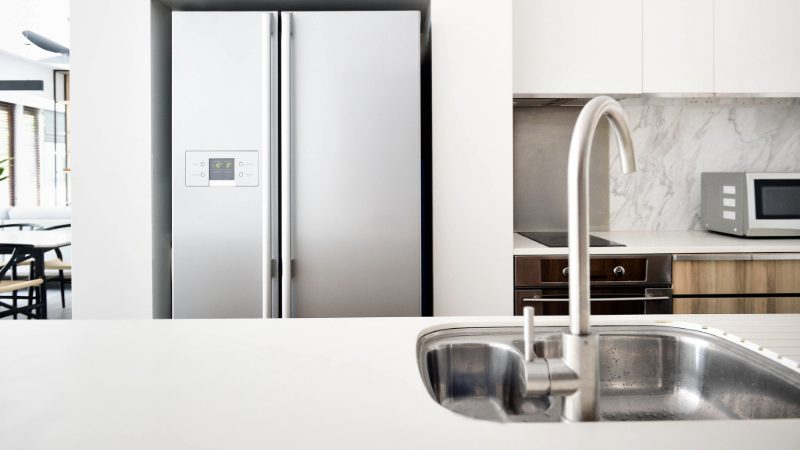A powder clear coat is a transparent powder coating designed to enhance the durability and appearance of a surface while preserving its original look. While the technology for powder coatings originated in the 1940s, clear powder coatings emerged in the 1980s. Today, they are used on a variety of substrates like metal, plastic and wood.
Clear coat powders are characterized by their high levels of transparency and clarity, allowing light to penetrate the surface while providing a protective layer. Unlike pigmented powder coatings that are opaque and block light from reaching the substrate, clear coats preserve the natural finish and visibility of the substrate beneath when applied as a single layer.
Composition of Powder Clear Coats
The formulation of powder clear coats typically involves resins and crosslinkers similar to those used in opaque powder coatings. While clear coats can be created using nearly any powder coating resin system, some systems offer superior clarity. The most commonly available clear coats are based on polyester resins, but epoxies and acrylics may also be utilized, either as primary resins or blended with polyesters to achieve specific properties, adhesion strength and mechanical features.
To preserve the optically transparent nature of clear coats, additional materials in the formulations must be carefully selected.
Application Versatility
Clear coat powder finishes can be applied as a standalone one-layer system directly onto a substrate or as an additional layer in multi-coating systems, including those stacked on top of powder and liquid basecoats. This versatility makes clear powder coats suitable for a wide range of automotive, consumer appliance and general industrial applications.
In automotive applications, powder clearcoats are commonly applied to decorative trim and accessories, wheels and wheel hubs and parts like brakes and shocks; this additional layer of protection shields the parts from corrosive elements, UV damage and road wear.
In consumer applications like washing machines, ovens and refrigerators, clear coat powder coatings are used to protect products from external damage that stems from heavy use, heat and chemicals, helping to preserve both form and function.

The Value Proposition of Clear Powder Coatings
Clear coat layers serve both decorative and functional purposes, with three primary benefits:
- Durability: Clear coats enhance the durability and resilience of powder coating systems by providing added protection against outdoor weathering, including salt, acids and environmental pollutants. When used as a single layer for exterior applications, a clear coat film shields the substrate from environmental degradation. When used as an additional layer, clear coats protect the underlying coating system from ultraviolet light (UV) degradation, preserving color fastness and overall integrity. For interior products, clear coats strengthen the paint system against wear from material handling and protect against cleaning chemicals and food interactions, particularly in consumer appliances.
- Specialized Coating Features: Clear coats can be formulated to include enhanced functional features, such as microbial resistance for medical applications or improved cleanability for surfaces like dry erase boards.
- Design Aesthetics: Clear coats can add depth to finishes and are available in various gloss levels from matte to high gloss. The clarity of a clear coat is crucial for high-end decorative coatings, often quantified by "Distinctness of Image" (DOI), which indicates how clearly an image is reflected through the coating. This property is particularly important when a clear coat is used to protect and maintain the brilliance of metallic or highly chromatic coatings. Additionally, clear coats can be tinted with special effect pigments or dyes to enhance the visual appeal of decorative coating systems.
How Powder Clear Coats are Made
The manufacturing process for powder clear coats is similar to that of opaque powder coatings. Ingredients are pre-mixed, extruded and then finely ground into powder paint, with particles typically ranging from 30 to 50 microns in size. The primary distinction in producing powder clear coats lies in the preparation of the processing equipment.
To avoid contamination, meticulous cleaning of the equipment is essential, as even trace amounts of opaque pigments or additives can decrease the clarity of the clear coat and lead to imperfections in the finish. Consequently, many manufacturers utilize dedicated equipment for producing clear coats to minimize lengthy cleaning cycles and reduce the potential for rework due to defects.
Powder Application Techniques
The most common method for applying powder clear coats is electrostatic spray. In this process, a special gun imparts a negative electrical charge to the paint particles, which are then sprayed onto a positively grounded part. This electrostatic attraction ensures excellent adherence and uniform coverage.
The Curing Process for Clear Coats
Like all powder coating formulations, clear coat powders require proper curing to achieve the desired mechanical properties, such as hardness and flexibility, as well as functional properties like UV stability and corrosion resistance. After application, the coated part is moved through an oven where heat melts and fuses the particles, forming an interconnected molecular chain. Once cooled, the result is a durable, transparent and sustainably advantaged powder coat finish that is suitable for a wide range of interior- and exterior-use applications.
Significant Growth in Transparent Powder Formulations
Innovations in powder coating technologies are coming fast, helping to fuel demand for clear coat powders across a growing range of industries and applications. By enhancing depth and brilliance, preserving color fastness, extending asset lifespan and reducing maintenance and cleaning, these advanced powder coatings are emerging as a clear winner in contemporary finishing solutions.
